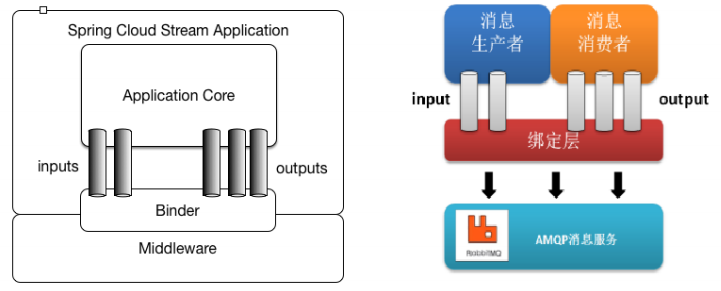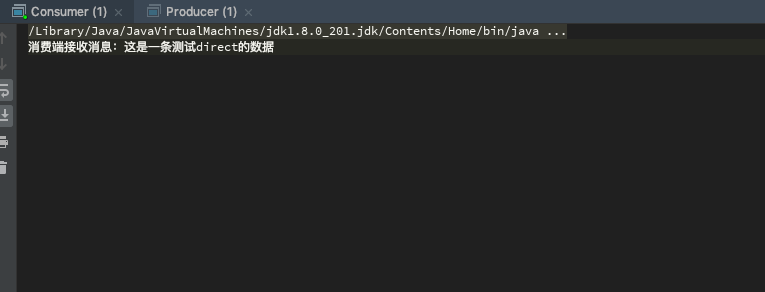CMake Tutorial
1.最简实例
使用cmake的最简实例是由一个源程序文件生成一个可执行文件。例如由下述C++源程序文件生成可执行文件tutorial。
main.cpp
#include<iostream>using namespace std;int main(){cout<<"hello world"<<endl;}
需要编辑CMakeLists.txt文件如下:
cmake_minimum_required(VERSION 2.6)project (tutorial)add_executable(tutorial main.cpp)
其中cmake_minimum_required指定了cmake最低版本限制,project指定了项目名称,add_executable指定了生成的可执行文件名称为tutorial,源程序文件为main.cpp。
需要生成项目可以cd到此目录,然后依次执行下述命令:
cmake .make
可见,cmake帮助我们快速生成了项目的makefile文件,从而可以通过make命令直接生成项目的可执行文件。此时,在该路径下就生成了可执行文件tutorial,执行该程序,有:

使用cmake就是如此简单快捷!
2.设置版本号和配置头文件
如果在cmake中指定版本号这样更加灵活,我们可以这么操作:通过CMakeLists.txt文件指定版本号,然后通过CMake链接到CMakeLists.txt 文件生成含有该版本号的头文件,之后就可以引用该头文件中的版本号了。
例如:我们在CMakeLists.txt文件中指定了下述两个版本号:
cmake_minimum_required (VERSION 2.6)project (Tutorial)# The version number.set (Tutorial_VERSION_MAJOR 1)set (Tutorial_VERSION_MINOR 0)# configure a header file to pass some of the CMake settings# to the source codeconfigure_file ("${PROJECT_SOURCE_DIR}/config.h.in""${PROJECT_BINARY_DIR}/config.h")# add the binary tree to the search path for include files# so that we will find config.hinclude_directories("${PROJECT_BINARY_DIR}")# add the executableadd_executable(Tutorial main.cpp)
config.h.in 中引用了CMakeLists.txt中定义的两个版本号,如下所示:
#define Tutorial_VERSION_MAJOR @Tutorial_VERSION_MAJOR@#define Tutorial_VERSION_MINOR @Tutorial_VERSION_MINOR@
main.cpp文件直接引用config.h头文件中定义的版本号,如下所示:
#include "config.h"#include<iostream>using namespace std;int main(){cout<<"Tutorial_VERSION_MAJOR: "<<Tutorial_VERSION_MAJOR<<endl;cout<<"Tutorial_VERSION_MINOR: "<<Tutorial_VERSION_MINOR<<endl;cout<<"hello world"<<endl;return 0;}
此时,执行命令cmake不仅生成了makefile文件,还链接生成了config.h文件,如下所示:
#define Tutorial_VERSION_MAJOR 1#define Tutorial_VERSION_MINOR 0
执行命令make,然后顺利生成了可执行文件Tutorial,执行该文件有:

完美!
3.在项目中添加可选库
在大型项目中,我们需要根据实际情况决定到底引用哪个库中的函数实现。我们可以借助CMake便捷的实现库的可选性。
如下,设置CMakeLists.txt文件如下所示:
# CMake 最低版本号要求cmake_minimum_required (VERSION 2.8)# 项目信息project (Tutorial)# 是否使用自己的 MathFunctions 库 这是可选的,ON使用,OFF不使用option (USE_MYMATH "Use provided math implementation" ON)# 加入一个配置头文件,用于处理 CMake 对源码的设置,与option相对应configure_file ("${PROJECT_SOURCE_DIR}/config.h.in""${PROJECT_BINARY_DIR}/config.h")# 是否加入 MathFunctions 库if (USE_MYMATH)include_directories ("${PROJECT_SOURCE_DIR}/math")add_subdirectory (math)set (EXTRA_LIBS ${EXTRA_LIBS} MathFunctions )endif (USE_MYMATH)# 查找当前目录下的所有源文件# 并将名称保存到 DIR_SRCS 变量aux_source_directory(. DIR_SRCS)# 指定生成目标add_executable (Tutorial ${DIR_SRCS})target_link_libraries (Tutorial ${EXTRA_LIBS})
相对应的,为了使得CMake能够自动的根据option自动生成相对应的头文件config.h,我们编辑config.h.in文件如下:
#cmakedefine USE_MYMATH
当我们设置option为ON的时候,CMake链接生成的config.h头文件如下所示:
#define USE_MYMATH
所以,我们可以在主程序源文件中根据USE_MYMATH是否定义来决策是否使用自定义库。主源程序文件main.cpp如下所示:
#include <stdio.h>#include <stdlib.h>#include "config.h"#ifdef USE_MYMATH#include "math/MathFunctions.h"#else#include <math.h>#endifint main(int argc, char *argv[]){double base = 2.0;int exponent = 4;#ifdef USE_MYMATHprintf("Now we use our own Math library. \n");double result = power(base, exponent);#elseprintf("Now we use the standard library. \n");double result = pow(base, exponent);#endifprintf("%g ^ %d is %g\n", base, exponent, result);return 0;}
我们自行定义的库在子文件夹math中,其中主要有两个文件,分别是头文件和源程序文件,如下所示:
MathFunctions.h
#ifndef POWER_H#define POWER_Hextern double power(double base, int exponent);#endif
MathFunctions.cpp
/*** power - Calculate the power of number.* @param base: Base value.* @param exponent: Exponent value.** @return base raised to the power exponent.*/double power(double base, int exponent){int result = base;int i;for(i = 1; i < exponent; ++i){result = result * base;}return result;}
为了打包生成库文件,也需要在库文件夹中定义CMakeLists.txt文件,如下所示:
# 查找当前目录下的所有源文件# 并将名称保存到 DIR_LIB_SRCS 变量aux_source_directory(. DIR_LIB_SRCS)# 指定生成 MathFunctions 链接库add_library (MathFunctions ${DIR_LIB_SRCS})
最后,测试一下我们的项目,执行命令:
cmake .make
项目顺利编译通过,执行生成的可执行文件Tutorial,有:

pass!
转载于 //www.cnblogs.com/zhoudayang/p/5458861.html
//www.cnblogs.com/zhoudayang/p/5458861.html



































还没有评论,来说两句吧...